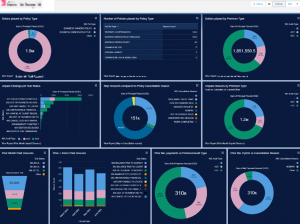Life insurance startup Lapetus Solutions, Inc. (LSI) made headlines last year by offering a service for people to buy life insurance by submitting a selfie called SMILe (Smoker Indication and Lifestyle Estimation).
The service works by using facial analytics technology to examine hundreds of points and thousands of regions on the face to instantly find BMI, age, gender
Additionally, Lapetus offers another platform called JANUS to help life insurers “engage today’s generation of mobile-enabled customers in the online quote, application and purchase process.”
According to the Lapetus website, JANUS returns highly accurate gender, age and BMI estimates from the analysis of a simple selfie, which can be used by carriers with engagement, approval or product development initiatives.
The JANUS platform also has the ability to age progress an image. Research has shown that when people picture themselves in the future, they are more inclined to plan for retirement.
Along with life insurance, these tools can benefit health insurance, financial services, public health, cosmetics, plastic surgery
How accurate is facial analytics technology?
According to Blair Baldwin, Co-Founder and CEO of Quilt, an insurance company that offers a selfie quote for life insurance, the goal behind the selfie quote isn’t 100% accuracy.
In an article by the Huffington Post, Baldwin states, “Really, the goal behind the selfie quote isn’t 100% accuracy. We see it more as a way to engage younger people with life insurance, which is something they may not know they need, and to do it in a really fun and accessible way.”
Advantages
Facial analytics technology can streamline the claims process and help insurers identify riskier insureds.
This technology offers insureds a quick, easy way to get coverage while providing insurers with more insight into insureds’ risk levels.
Additionally, selfie quotes are a great way to bring awareness to younger generations who may need life insurance but are intimidated by the process.
According to the 2017 Insurance Barometer Study by Life Happens and LIMRA, only 52% of millennials have life insurance, even though an even higher percentage have a spouse or child that would need financial protection if something were to happen to them.
Disadvantages
With advantages come disadvantages.
It was revealed this year that a surveillance company has been building a massive facial recognition database using data gathered from social media websites like Facebook and YouTube.
This database can then be used by the U.S. government to fight terrorism online, but also to research political and social groups.
This is reminiscent of the 2014 incident involving the National Security Agency (NSA) in which Edward Snowden revealed that the intelligence agency had gathered over 50,000 “facial recognition quality images” from the web.
Facial analytics technology is largely unregulated thus far but is rapidly improving.
While facial analytics technology is groundbreaking, it still has a long way to go in terms of accuracy.
Looking ahead
In the future, Lapetus hopes to be able to detect chronic diseases and alcohol use through facial analytics technology.
According to CMFE news, the market for 3D facial recognition technology is expected to reach $2.67 billion by 2022.





